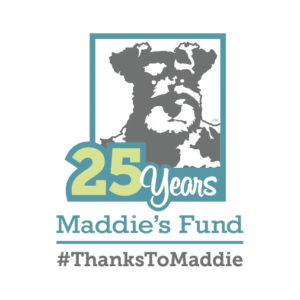As our 25th anniversary celebration continues, we’re looking back “then and now” style at some of the grants we’ve given over the years, and the amazing impact they’ve had on their communities since then. We’re continuing the stories with Austin, Texas.
When it comes to astonishing progress in saving shelter pets, Austin, TX, stands out as a model for the nation. The City of Austin began working towards becoming no-kill in 1997, and their live release rate grew from 37% in 1998 to 50% in 2002.
The Austin Coalition, a partnership between animal welfare organizations, was formed in 2007 and comprised of Austin Animal Center (AAC), Austin Pets Alive! (APA!) and Austin Humane Society (AHS). As a result of this partnership, Austin’s live release rate continued to increase reaching 94% in 2012 with an intake for all organizations of 30,701 animals.
The coalition worked together to create extremely effective programs including adoption, volunteer and foster programs, allowing animals to be placed quickly into loving homes. The relationship between the agencies is a tremendously successful model for communities across the U.S. Austin’s save rate is currently 98%.
In 2014, the Austin Coalition was awarded the Maddie’s® Lifesaving Award for Travis County to recognize their achievement in sustaining and maintaining the county’s no-kill status, saving all healthy and treatable shelter pets. This $3 million grant was split among the recipients: Austin Animal Center ($1,170,000), Austin Humane Society ($570,000) and Austin Pets Alive! ($1,260,000).
Collaboration has been key to Austin’s success. “Austin Humane Society believes that solid partnerships are built on establishing real relationships in which partners know they can trust and rely on each other,” said Dr. Katie Luke Broaddus, COO of AHS. “Like any relationship, collaborative partnerships require ongoing communication, kind honesty, feedback and putting the goals of the partnership before individual agendas.”
April Moore, Engagement Manager of Austin Animal Care echoes Broaddus’s sentiments. “In Austin, we seek to build strong relationships with our community, including, but not limited to, rescue organizations, social organizations, council offices, community members, liaisons, volunteers and advocates,” Moore said. “Working together also ensures that we aren’t duplicating services another organization is already providing.”
Maddie’s Fund has continued to invest in the no-kill Austin model. In 2016, Maddie’s Fund awarded a $442,250 grant to launch the Maddie’s® Lifesaving Academy. A partnership of APA! and AAC, the Maddie’s® Lifesaving Academy provides online and onsite practical training through over 18 apprenticeships and master classes covering topics from fostering, leadership, lifesaving, operations and shelter medicine. All designed to inspire students to implement what they learn with other organizations in their own communities.
“Maddie’s® Lifesaving Academy is important to saving animals across the country,” said Dr. Ellen Jefferson, Executive Director at Austin Pets Alive!. “Training others about lifesaving programs that they can implement in their own communities has a large and lasting impact. Through apprenticeship programs and the American Pets Alive! Conference with leadership intensives, we have the opportunity to help create leaders in all communities across the nation, thanks to Maddie.”
Since 2016, Maddie’s Fund has supported the American Pets Alive! Conference, held annually in Austin, with a total of $452,200 in grant funds, to help others across the country learn how to achieve no-kill status.
“The City of Austin is a model city for lifesaving and is important to both our movement and the country,” said Mary Ippoliti-Smith, Maddie’s Fund® Executive Leadership Team. “There is an incredible ripple effect of collaboration, leadership and lifesaving education exponentially spreading to communities across the U.S.”
Ready to achieve and sustain 90% live release rate in your community? Make sure you have an engaged community, supportive leadership, staff and volunteers, and a commitment to breaking through barriers, instead of letting them stand in your way. We look forward to seeing this collaborative model replicated across the nation to ensure all the dogs and cats in America find a loving home or habitat!
Read the first Then and Now story: Alachua County Community Collaborative Project

